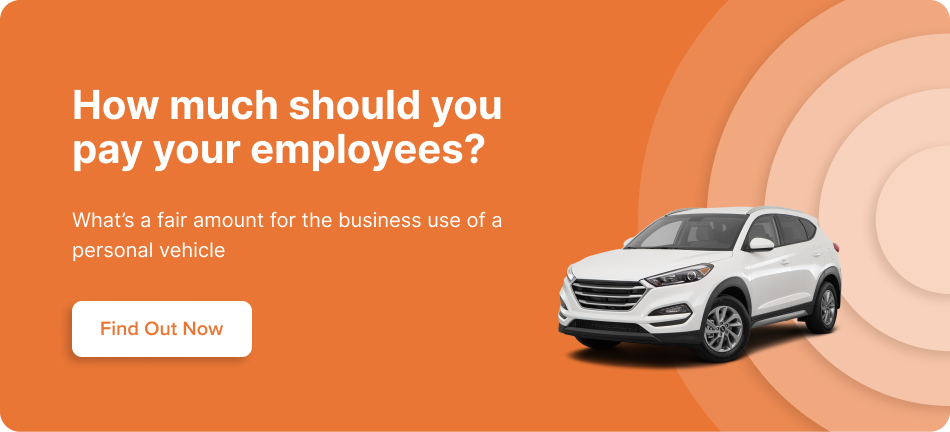Increasingly, businesses are opting for FAVR programs over traditional car allowances, mileage reimbursements, and fleet programs. Here's a brief overview of FAVR car allowances and why they are growing in popularity.
What is a FAVR car allowance?
FAVR stands for fixed and variable rate. A FAVR car allowance is an IRS-recommended plan that uses localized vehicle expense data to deliver tax-free payments for the business use of a personal vehicle.
A fixed and variable rate allowance determines payments by separating out fixed vehicle costs (such as insurance) from variable vehicle costs (such as fuel). A typical car allowance works best for fixed costs that do not depend on how much you drive. A mileage rate is most effective for variable costs that depend on the amount of driving. But drivers experience both costs.
A FAVR plan works well for both types of costs. This ensures that payments accurately and fairly cover the costs of a wide range of employees, regardless of their location, workplace, or driving distance. FAVR plans also guarantee compliance with both IRS rules and state labor codes.
What are the requirements of a FAVR plan?
To offer a FAVR plan, an organization must have at least five employees enrolled in the plan. Each employee on the plan needs to drive at least 5,000 business miles annually.
Because a FAVR car allowance issues tax-free payments, businesses have to substantiate the business use of all payments. This is typically done through a mobile app that tracks business mileage.
FAVR plans also require access to localized vehicle cost data in order to generate accurate payments that meet IRS regulations. A number of organizations specialize in providing this kind of data, which is why most businesses that adopt a FAVR plan partner with a program administrator rather than running the plan in-house.
What businesses benefit most from FAVR car allowances?
Any business that meets the size and mileage requirements can benefit from adopting a FAVR plan. Often, businesses that have been providing a taxable car allowance can reduce costs while offering a more beneficial benefit to employees. They do this by repurposing 30-40% of the allowance that was going to taxes into the new program and sharing those savings with employees.
Businesses that offer mileage reimbursement can resolve discrepancies between employees with low mileage and those with high mileage, as well as employees working in different parts of the country and facing varying costs.
If you currently pay for fuel or operate a fleet, you can eliminate the cost control issues associated with these programs, as well as the headaches of managing personal vehicle use and fuel expenses.
How do you choose a FAVR plan provider?
When choosing a partner to administer a FAVR plan, there are a number of key qualities to look for:
- Expertise with different-sized companies with different types of plans
- Ability to customize the plan to fit your organization's goals
- A stable mobile app that is reliable with no battery drain
- Easy-to-use mileage capture and approval process
- A flexible architecture that allows the plan to grow with your company
- Software integrations that fit existing systems and processes
Exploring FAVR plan options for your business
To learn more about how FAVR car allowances work, here are a number of resources that mBurse can provide:
- FAVR plan comparison – compare your current plan with a FAVR plan
- Ultimate Guide to FAVR – dive into the case for FAVR as best practice
- The FAVR Car Allowance, Defined – a shorter dive into the case for FAVR
- Procurement Checklist – A guide to help you find the right FAVR partner

